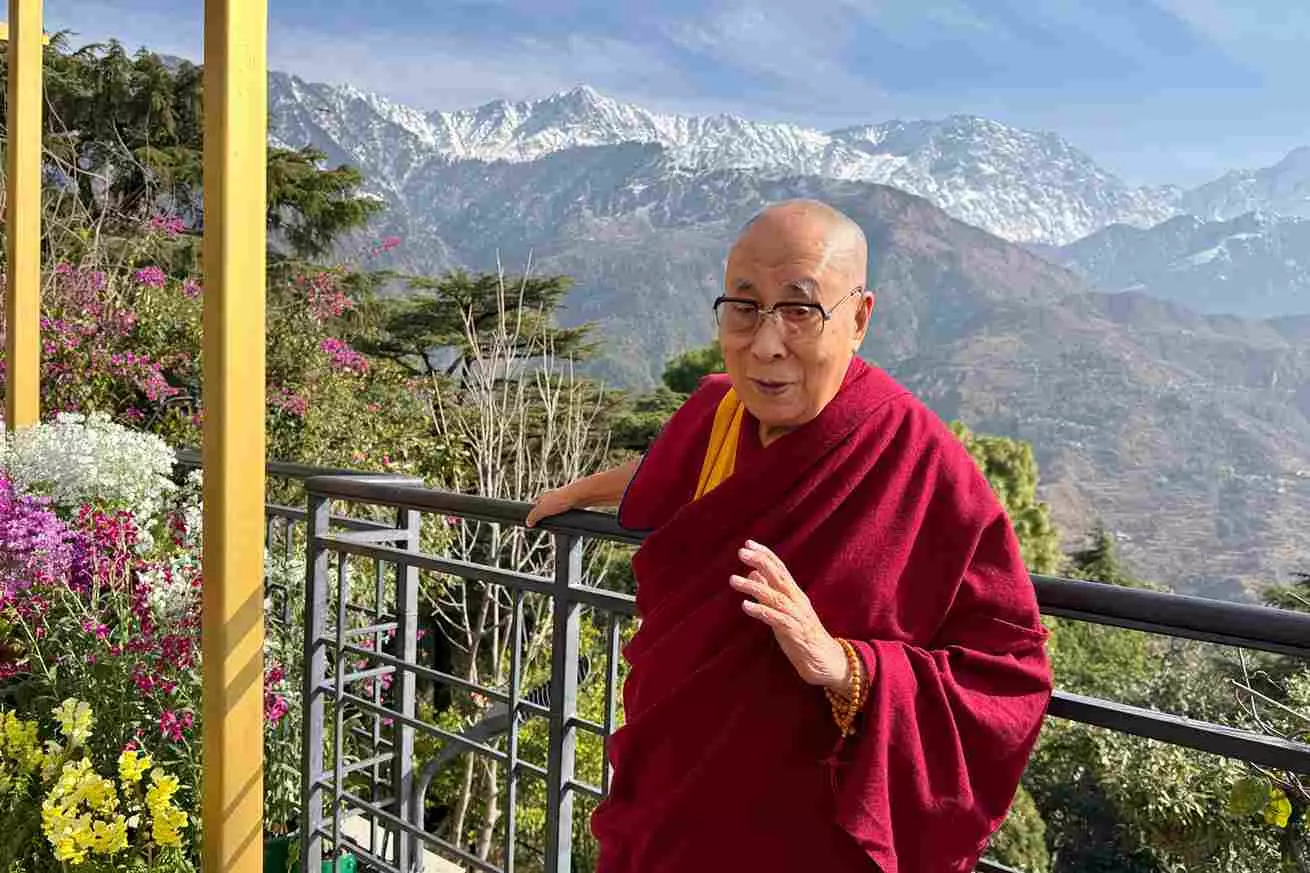
- Home
- India
- World
- Premium
- THE FEDERAL SPECIAL
- Analysis
- States
- Perspective
- Videos
- Sports
- Education
- Entertainment
- Elections
- Features
- Health
- Business
- Series
- In memoriam: Sheikh Mujibur Rahman
- Bishnoi's Men
- NEET TANGLE
- Economy Series
- Earth Day
- Kashmir’s Frozen Turbulence
- India@75
- The legend of Ramjanmabhoomi
- Liberalisation@30
- How to tame a dragon
- Celebrating biodiversity
- Farm Matters
- 50 days of solitude
- Bringing Migrants Home
- Budget 2020
- Jharkhand Votes
- The Federal Investigates
- The Federal Impact
- Vanishing Sand
- Gandhi @ 150
- Andhra Today
- Field report
- Operation Gulmarg
- Pandemic @1 Mn in India
- The Federal Year-End
- The Zero Year
- Science
- Brand studio
- Newsletter
- Elections 2024
- Events
- Home
- IndiaIndia
- World
- Analysis
- StatesStates
- PerspectivePerspective
- VideosVideos
- Sports
- Education
- Entertainment
- ElectionsElections
- Features
- Health
- BusinessBusiness
- Premium
- Loading...
Premium - Events

Beijing bound to make life difficult for new Dalai Lama by branding him a fake and imposter, and insisting the one reincarnated in China is the real 15th Dalai Lama
The Dalai Lama’s announcement that there will be a successor to him and that a trust set up by his office will alone decide on the reincarnation will put the revered institution in direct conflict with China after his demise. It is also bound to have consequences for India, home to the largest Tibetan community outside Tibet.
Also read | Dalai Lama at 90: The monk who became the world’s conscience through compassion
Since the Chinese Communist victory in 1949 and Tibet’s takeover the next year, the one individual whose moral and religious authority Beijing has not been able to nullify despite its best efforts is the incumbent Dalai Lama, the 14th in a centuries-old institution. His 90th birthday falls on Sunday (July 6).
One-man army against China
Since he escaped from Tibet in 1959 after he realised that Mao’s China was determined to wipe out Tibetan culture, the Dalai Lama has stood against Beijing like a solid one-man army, his spiritual and temporal authority constantly challenging Communist legitimacy over the Tibetan nation.
All the abuse heaped on the Dalai Lama – “counter-revolutionary”, “splittist” and “imperialist agent” – has only added to the weight the Tibetan leader commands in an imperfect world where country after country is forced to deal today with an economically and militarily powerful China.
Chinese officials say that since the Qing Dynasty (1644-1911), the reincarnation of the Dalai Lama and other grand Living Buddhas had to follow the procedure of drawing lots from a golden urn. The selected candidate would be subject to approval by the central government of China.
This is certainly not how the 14th Dalai Lama was picked.
Successor in ‘free world’
Born in 1935 as Lhamo Thondup, the present Dalai Lama was barely three years old when a search party of the Tibetan government reached Kumbum monastery in Tibet, led by mystical signs. To cut a long but interesting story short, when the child correctly identified the objects belonging to the 13th Dalai Lama, the boy was acknowledged as the new Dalai Lama. After more than a decade of intense studies and religious training, the Dalai Lama was enthroned on November 17, 1950.
Keeping in mind the traditional Tibetan way, the Dalai Lama declared on July 2 at Dharamsala in India, where he is based, that the institution of the Dalai Lama would continue – there was some confusion on this for a while – and that the Gaden Phodrang Trust, which his office founded in 2011 as a non-profit body, would have the final say on the matter. This was in line with the Dalai Lama’s earlier announcements that his successor would be chosen in the “free world” – that is outside China.
This has sparked a predictable denunciation from the Chinese government. While Beijing has come to accept the institution of the Dalai Lama as it has no other choice, it wants a Dalai Lama of its liking, not one located beyond the borders of China. It is no wonder that the Chinese foreign ministry said in response to the Dalai Lama’s statement in Dharamsala that any future Dalai Lama must secure its approval.
Two Dalai Lamas on cards?
Since neither side is expected to back down, the world can see two Dalai Lamas once the incumbent passes away. This will be the beginning of many complicated problems.
Also read | Ground report | Dalai Lama’s presence in Bylakuppe fuels exiled Tibetans’ longing for homeland
In 1959, Mao Ze Dong, with decades of political experience behind him, rightly prophesied that China had lost half the battle by letting the Dalai Lama escape from Tibet. The astute Dalai Lama proved Mao right.
Although life was not easy for the Dalai Lama and the hundreds of thousands who followed him out of Tibet, more so in the initial years, the world slowly began to come to accept and admire the Tibetan leader. It was also relatively easy for many countries to needle China from the 1960s to the 1980s when the Asian giant was an economic disaster.
A new Dalai Lama chosen by the followers of the present Dalai Lama will arrive at a time when the Chinese shadow over the world has got longer and longer. China is bound to make life difficult for the new Dalai Lama by branding him a fake and imposter, and insisting that the one reincarnated in China is the real 15th Dalai Lama. Like Beijing insists that the world must not recognise Taiwan, it will make a similar demand vis-à-vis the India-based Dalai Lama.
This is where India will find the going tough.
Friction in Sino-Indian ties
China has never been happy that the Indian government gave refuge to the fleeing Dalai Lama and his entourage, leading to the formation of a Tibetan government-in-exile in the northern hill town of Dharamsala.
While New Delhi has recognised Tibet as a part of China, its hospitality to the Dalai Lama and the multi-faceted help it extended to his administration have always irked Beijing. This remains, from China’s point of view, a perennial point of friction in Sino-Indian relations. As it is, due to fears of rubbing China the wrong way, Indian officials and the political class keep a safe distance from the Dalai Lama – although this was not always so in the past. Once Beijing comes up with its own Dalai Lama, India will find it difficult if not impossible to deal with the new Dalai Lama on its soil.
China could even come up with the argument that any backing, direct or indirect, to the India-located Dalai Lama by any country will amount to interference in Beijing’s internal affairs. From the past, it is safe to assume that Beijing will insist on such a declaration in any bilateral statement it issues with India.
Tricky terrain ahead
The present Dalai Lama has more than once described himself as a “half-Marxist”, impressed as he was by Mao’s personality although not by his communist party. With the world increasingly turning its attention away from Tibet, a new Dalai Lama outside China will find the path ahead torturous. The present Dalai Lama is a Nobel Peace Prize winner whose word is taken seriously in much of the world. His stature – he had engaged with Mao directly – is such that it overwhelms Chinese propaganda over Tibet.
Also read | The Dalai Lama on how he fled his home in Lhasa after Chinese oppression
The new Dalai Lama will have none of these advantages.
I have met the Dalai Lama more than once. For a spiritual leader, he is full of life; his boisterous laughter – he looks like a child when he laughs his heart out -- can obliterate all worries. It is probably years of meditation and Buddhist studies that a man burdened by Chinese excesses on his people and land resembles one who has no apparent care in the world.
At one time, when he was told that China wanted to decide on his successor, the Dalai Lama wondered loudly why Beijing was so worried about the issue when he had no plans to die anytime soon. It will be near impossible for any future Dalai Lama to match the appeal and personality of the incumbent.
(The Federal seeks to present views and opinions from all sides of the spectrum. The information, ideas or opinions in the articles are of the author and do not necessarily reflect the views of The Federal.)


